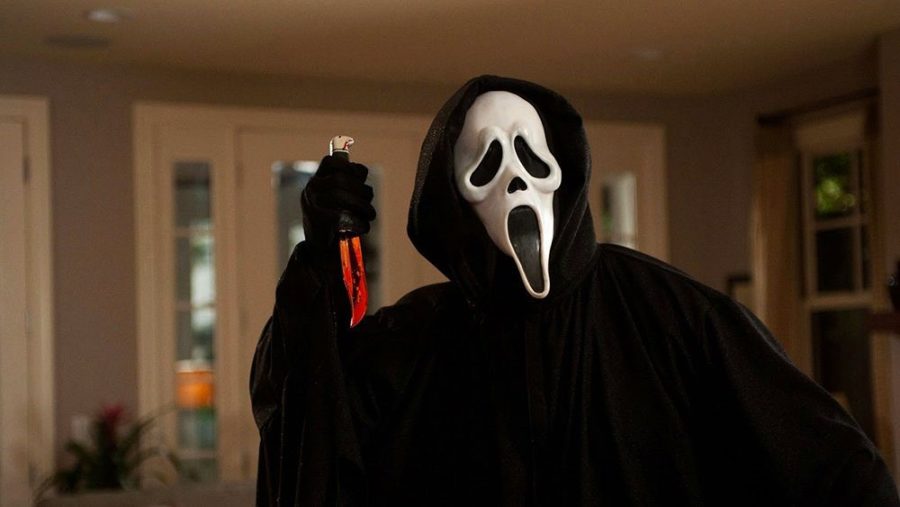The True Horror in Horror Movies: Lack of Creativity
December 7, 2017
In the early 90s and 00s, horror movies used to be incredibly creative, capturing viewers’ attention through unique plot lines, suspense, and other approaches. However, in recent years, horror movie creativity seems to be dwindling and tactics to capture the viewer’s attention seem lazier. To improve this, horror film producers and writers must develop better plot lines, avoid using clichéd horror techniques, and make the movie more unique.
Horror movies today contain duller and duller plot lines, giving the films little clarity. For example, in the 2017 film It Comes at Night, the plot is very vague and key aspects of the story are never explained. The storyline from IMDb sounds enticing: “Secure within a desolate home as an unnatural threat terrorizes the world, the tenuous domestic order he has established with his wife and son is put to the ultimate test with the arrival of a desperate young family seeking refuge.” Although this film may seem interesting at first, it does not live up to the hype. The film does a poor job in explaining how the apocalypse happened and primarily leaves it up to the reader to guess what caused the end of the world. Also, the film’s title and plot are very different from one another. By the title, one might assume that there is some horrifying monster or demon that the family has to hide from and maybe fight in the end. In reality, nothing comes at night and it is just a group of paranoid people who ultimately kill each other in the end.
Secondly, today’s horror movies incorporate too many clichéd jump scares. Although jump scares are an effective way to make a movie scary, the frequent use of them make the movie seem cheap and unoriginal. For example, the R-rated Annabelle: Creation, relied heavily on jump scares to make the film much scarier than it actually turned out to be. The jump scares got old through the middle part of the film and became predictable in occurrence. The problem with frequent jump scares is that they cloud the suspense that haunts the viewer for hours after they have left the theater, leaving audiences without the thrill they love.
Over the past several years, the horror film genre has developed a trend of repetition. Some of the movies that are less creative piggy-back off the great horror movies of the past via sequels or even remakes. For example, Saw took the world by storm in 2004 through its intricate traps, unusual setting and lack of jump scares. However, the seven sequels to the movie learned from this and copied it over and over to the point where the movies seemed only like parodies of the original.
Horror movies have decreased in creativity due to poor plot lines, overused horror clichés, and homogeneity. Although there are still spectacular present horror films like 2017’s It and 2014’s The Babadook, horror movies are following an unfortunate trend towards making the movies not match the quality of their predecessors. For those who truly love the horror genre, the trend is what is truly scary.








Jacob Orloff • May 3, 2018 at 11:36 am
I think what people fail to recognize is the gaping difference between horror films and scary films. Classics such as The Thing, The Shining, and Psycho have imprinted themselves into history, however, I feel that horror filmmakers are chasing a new formula: to take wherever people feel safe, then turn it around. You see unsuccessful scary films with party games that go WAY too far (Truth or Dare), grandma’s house (The Visit), tiny plush Furbies (Gremlins), and blood-thirsty mice (Ratatouille). The horror industry is being stimulated and plummeting at the same time.
Trevor White • Jan 19, 2018 at 7:42 pm
I like and agree with most of your article. However when you talk about great horror films from the 90’s and 00’s what are you referring to specifically? When I think of great horror films I think of Night of the living Dead-1968, Halloween-1978, Carrie-1976, The Shining-1980, none from the 90’s or 00’s. This is probably just a nitpick of a article I like, but from the time period you’ve chosen I can only think of one film Misery-1990 which is one out of the many you alluded to. I like the article, but that little thing bugged me and probably only me.